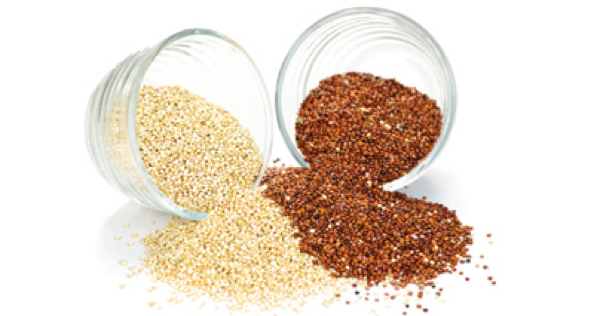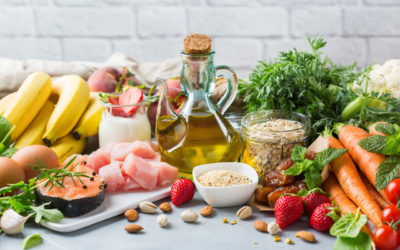by Jessie Price
By now you’ve probably tasted quinoa, and probably even know how to pronounce it (“keen-wah”). Maybe you’ve come to love it because it’s a healthy whole grain and cooks up in just 20 minutes or because it has a lovely nutty taste and delicate popping texture. But are you quinoa-savvy?
Here are facts about quinoa nutrition, rinsing and cooking quinoa, and how to use quinoa flour and quinoa flakes.
Quinoa varieties: What is red quinoa? What is black quinoa?
Quinoa is a quick-cooking, glutenfree whole grain (actually a pseudo whole-grain, because it’s cooked like a whole grain but is the seed of a beet relative). Quinoa grows in a rainbow of colors, but the most commonly available are red, black and white. Taste and nutrition are similar among the colors. White quinoa tends to cook up fluffier, while red quinoa and black quinoa have a crunchier texture and the grains don’t stick together as much.
Quinoa nutrition facts
Quinoa is nutritionally renowned for its protein content and while it does have a decent amount, it’s not actually the amount of protein that’s so impressive. Instead it’s the type of protein. Quinoa has the perfect balance of all nine amino acids essential for human nutrition. This type of complete protein is rarely found in plant foods, though common in meats. Quinoa also offers a good dose of fiber and iron. There are 111 calories in each 1/2 cup of cooked quinoa.
How to rinse quinoa
Do you need to rinse quinoa or not? Conventional wisdom has it that you need to rinse quinoa before cooking. Why? Quinoa seeds are coated with saponin, a bitter substance that protects the seeds from predators. However, most quinoa sold in the U.S. is pre-rinsed so there’s no need to do this. If you want to be cautious, go ahead and give it a rinse: Put the quinoa in a bowl, cover it with water, swish it around and then drain it in a fine-mesh sieve.
How to cook quinoa: quinoa-to-water ratio
If you can cook rice, you can cook quinoa. Here’s the simplest way to cook quinoa: Combine 1 cup quinoa with 2 cups water (or broth) in a medium saucepan. Bring to a boil over high heat. Reduce heat to low, cover and simmer until tender and most of the liquid has been absorbed, 15 to 20 minutes. Fluff with a fork before serving. When it’s cooked, quinoa will look slightly translucent and the white “string,” which is actually part of the hull, will be visible.
One cup dry quinoa yields 3 cups cooked or 6 (1/2-cup) servings. Keep in mind how fluffy quinoa gets when you’re putting it into soups. Don’t add too much or you’ll find all your liquid has disappeared.
How to bake with quinoa flour and how to cook with quinoa flakes
Want to go beyond basic quinoa? Here’s what to look for next: quinoa flakes, which are a lot like rolled oats and can be used similarly, and quinoa flour, a great option for baking, especially gluten-free baking. Look for both products in wellstocked supermarkets or naturalfoods stores.
Wondering how to make your own quinoa flour? To make quinoa flour, grind white quinoa in a clean coffee grinder until it’s a fine powder. It won’t be quite as fine as what you get in the store, but will work in recipes for cookies and bars where a really fine texture is not necessary!









